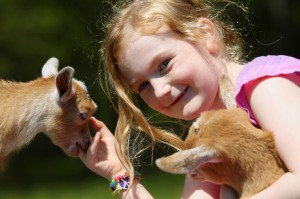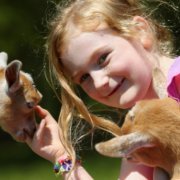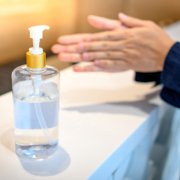Holiday cottages with a pets corner
Last Updated on February 2, 2022 by admin
Guidance for owners of holiday cottages with a pets corner
 British agriculture has seen unbelievable change since the turn of the century. During that time somewhere in the region of 60 – 80% of farms have diversified in totality or looked to new avenues in order to sustain incomes and grow revenues.
British agriculture has seen unbelievable change since the turn of the century. During that time somewhere in the region of 60 – 80% of farms have diversified in totality or looked to new avenues in order to sustain incomes and grow revenues.
From farm shops to organic produce or a multitude of other trades, farmers have utilised their buildings and land to their advantage. Many now turn their hand to the provision of accommodation in the form of holiday cottages and combine their agricultural roots with the hospitality sector by introducing a pets corner.
This experience can be particularly attractive for visiting families looking to give their children a slice of our glorious countryside. The ability to feed a goat, to pet a young lamb in spring or learn more about a curious looking alpaca brings visitors in their droves to diversified farms across the country every year.
Combining your holiday cottages with a pets corner brings considerations about health and safety; creating the best possible environment in which children and adults alike are able to enjoy their break whilst minimising the chances of risk.
Whether you’re a holiday cottage with a few sheep at the end of the garden or a working farm it’s important to consider the following areas:
The risk: Micro-organisms
Animals naturally carry a range of micro-organisms which can be transmitted to humans. Some that you will have heard and be more familiar with such as E. coli can have a detrimental effect on health, causing a range of ailments and symptoms.
For this reason it’s important that you have control measures in place to minimise the risk of these organisms being transmitted to guests and causing illness. These measures should be regularly reviewed for effectiveness, with changes implemented as developments are made and required.
Decide on where you will offer access
Access to animals should be restricted and clearly signposted. Establish where guests will be able to see and visit stock and how you’ll prevent them from potentially accessing restricted areas, for example through fencing or warning signs.
Selecting your Routes
Contact with an environment contaminated with animal faeces is a key cause of the transmittance of micro-organisms with humans. For this reason you should if possible avoid directing visitors across tracks regularly used by stock and farm vehicles. If this is unavoidable ensure that routes are cleaned and cleared on a regular and agreed basis.
Choosing the right animals
Animals that will be in contact with the public should be chosen carefully; stock that is young, pregnant, under stress or unfamiliar with dealing with people will be more likely to excrete mico-orgnisms and heighten the potential risk of transfer.
Keeping hands clean
Keeping hands clean is essential in minimising risks. Washing facilities should be readily available to visitors of all ages when leaving any area in which they have been touching animals, or could have come into immediate contact with them. Signage should be in place to direct visitors to these facilities, along with information on the importance of using them.
Soap dispensers must be checked and refilled regularly. Whilst the frequency of checks will depend on the number of visitors you have, as a minimum these should be accessed at the beginning of each day the site is open.
The use of signage
Communicating the measures you’ve put in place with your visitors is vitally important. Information should be provided to guests on potential risks to health, precautions taken to minimise those risks and their own obligations in minimising risks (e.g. washing their hands).
Signage should be used to:
- Clearly communicate designated routes, including those areas that are not open to the public.
- Highlight the location and importance of using hand wash after any contact with animals. This should include stating the use of cleansing or anti bacterial wipes is not a substitute for proper hand washing.
- Inform visitors to wash their hands prior to eating or using other facilities such as play areas, swimming pools or returning to their accommodation.
- Establish areas that no petting or contact with animals is permitted
The Industry Code Of Practice
For full information on the health and safety advice and requirements please refer to The Industry Code of Practice “Preventing or Controlling Ill Health from Animal Contact at Visitor Attractions” which has been updated and is available to download here:
If you have a pets corner as an attraction for guests staying at your holiday cottages be sure to inform and take advice from your specialist holiday cottage complex insurance advisers.
For further information and a quotation for your holiday home insurance call our specialist team on 01237 429444.
This article has been created as generic guidance for holiday home, cottage and holiday cottage complex owners and does not constitute legal or insurance advice. If you have any questions relating to health and safety management and the provision of a pets corner at your holiday cottages, you should discuss them with your broker or insurer.








Leave a Reply
Want to join the discussion?Feel free to contribute!